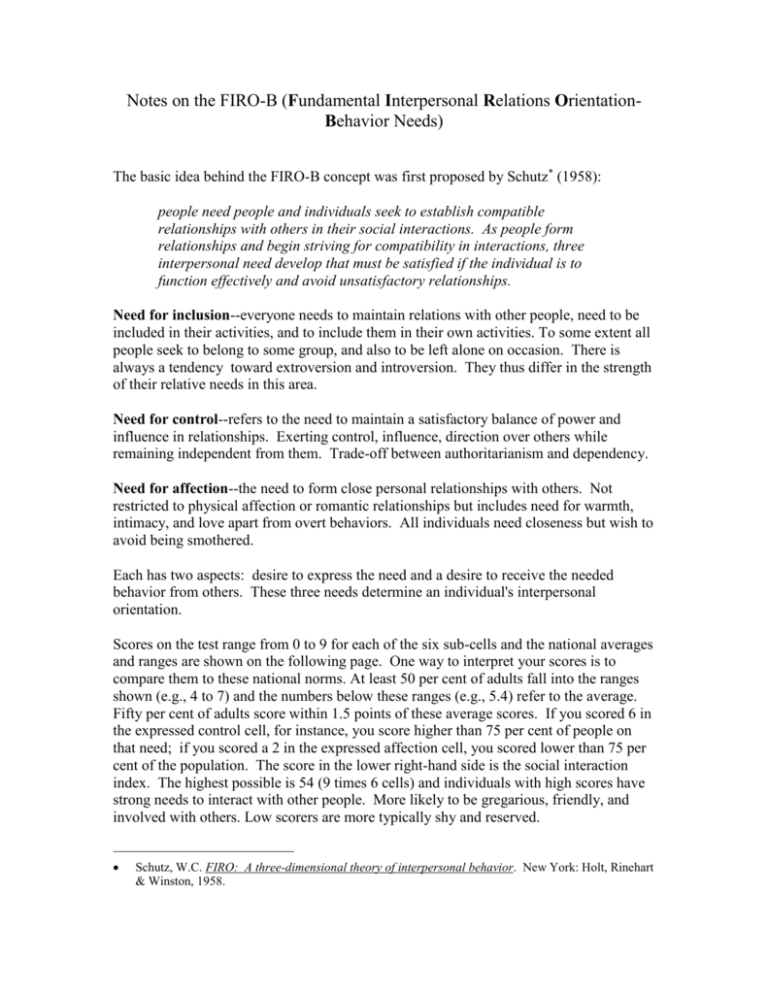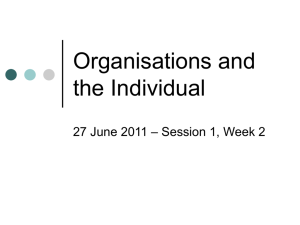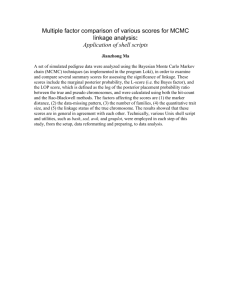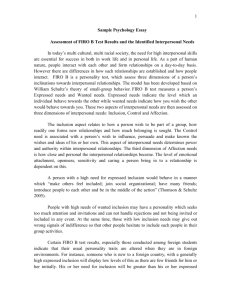Notes on the FIRO-B (Fundamental Interpersonal Relations
advertisement

Notes on the FIRO-B (Fundamental Interpersonal Relations OrientationBehavior Needs) The basic idea behind the FIRO-B concept was first proposed by Schutz* (1958): people need people and individuals seek to establish compatible relationships with others in their social interactions. As people form relationships and begin striving for compatibility in interactions, three interpersonal need develop that must be satisfied if the individual is to function effectively and avoid unsatisfactory relationships. Need for inclusion--everyone needs to maintain relations with other people, need to be included in their activities, and to include them in their own activities. To some extent all people seek to belong to some group, and also to be left alone on occasion. There is always a tendency toward extroversion and introversion. They thus differ in the strength of their relative needs in this area. Need for control--refers to the need to maintain a satisfactory balance of power and influence in relationships. Exerting control, influence, direction over others while remaining independent from them. Trade-off between authoritarianism and dependency. Need for affection--the need to form close personal relationships with others. Not restricted to physical affection or romantic relationships but includes need for warmth, intimacy, and love apart from overt behaviors. All individuals need closeness but wish to avoid being smothered. Each has two aspects: desire to express the need and a desire to receive the needed behavior from others. These three needs determine an individual's interpersonal orientation. Scores on the test range from 0 to 9 for each of the six sub-cells and the national averages and ranges are shown on the following page. One way to interpret your scores is to compare them to these national norms. At least 50 per cent of adults fall into the ranges shown (e.g., 4 to 7) and the numbers below these ranges (e.g., 5.4) refer to the average. Fifty per cent of adults score within 1.5 points of these average scores. If you scored 6 in the expressed control cell, for instance, you score higher than 75 per cent of people on that need; if you scored a 2 in the expressed affection cell, you scored lower than 75 per cent of the population. The score in the lower right-hand side is the social interaction index. The highest possible is 54 (9 times 6 cells) and individuals with high scores have strong needs to interact with other people. More likely to be gregarious, friendly, and involved with others. Low scorers are more typically shy and reserved. Schutz, W.C. FIRO: A three-dimensional theory of interpersonal behavior. New York: Holt, Rinehart & Winston, 1958. Inclusion Expressed Toward Others (e) Wanted From Others (w) Column Totals 4 to 7 5.4 5 to 8 6.5 9 to 15 11.9 Control Affection Row 2 to 5 3.9 3 to 6 4.1 9 to 18 13.4 3 to 6 4.6 3 to 6 4.6 11 to 20 15.9 5 to 11 8.5 6 to 12 8.9 20 to 38 29.3 Business school students differ significantly: accounting and systems had social interaction index means of 22 and 23 respectively, while marketing and HR majors had means of 31 and 32. Engineers and finance were in the middle of these scores. The greatest usefulness of the scores lies in comparing compatibility among individuals-matching scores among persons. One popular compatibility index is called the reciprocal incompatibility: Manager's e - Subordinate's w + Subordinate's e - Manager's w The straight lines indicate absolute values. Using the following illustration of a "manager's" scores and a "subordinate's" score, we may compute the reciprocal index in the inclusion area using the above formula. Manager Inclusion Control Affection Expressed 9 9 1 Wanted 8 4 4 Subordinate Expressed 3 8 6 Wanted 2 2 8 9 - 2 + 3 - 8 = 12 Any score higher than six (6) has been interpreted to imply that there is a strong possibility of incompatibility between individuals. Higher absolute scores mean greater incompatibility. Studies have found that among interpersonally compatible groups or teams there exist some of the following characteristics: more interpersonal attraction among members more positive group climate, less hostility more productivity, fewer errors faster problem solving Knowing interpersonal orientations is thus important to managerial success. As a manager some problems may be solved by increasing inclusion activities, by allowing someone else to express a bit more control, or by redefining an issue as an affection problem instead of a control problem.











